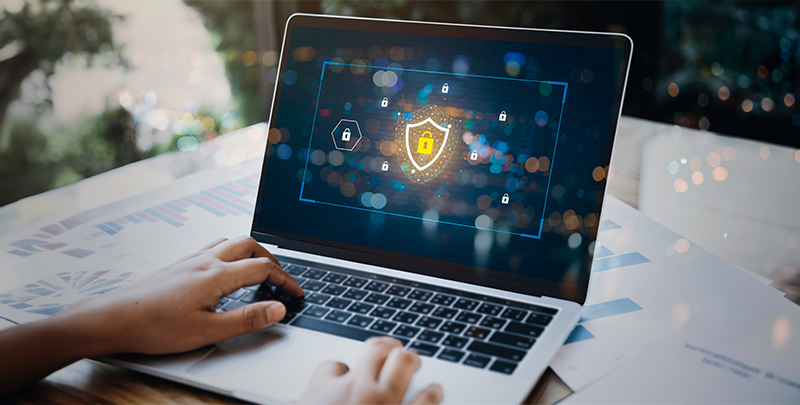Cybersecurity has become a significant concern in today's digital age, especially within the banking sector.
In 2023, as per a report by the Indian Cybercrime Coordination Centre, digital financial frauds have accounted for ₹1.25 lakh crore over the past three years. These statistics underscore the urgency for both banks and customers to stay vigilant and proactive in safeguarding their financial assets.
What is cyber security in banking?
Cyber security in banking involves various measures and protocols designed to protect financial institutions and their customers from cyber threats.
The main goal of cyber security in the banking sector is to ensure the integrity, confidentiality and availability of sensitive financial data. This means keeping your transactions secure, your personal information private, and banking services continuously accessible.
Why is cyber security important in banking?
• Protecting customer data: Banks hold vast amounts of sensitive data, including personal identification details and financial information. A breach can lead to identity theft and significant financial losses.
• Maintaining trust: Customers need to trust that their bank can protect their money and personal information. Robust cyber security measures help maintain this trust.
• Regulatory compliance: Financial institutions must comply with stringent regulations regarding data protection. Failure to do so can result in severe penalties and loss of reputation.
• Preventing financial losses: Cyber-attacks can result in direct financial losses for banks and their customers. Effective cyber security helps mitigate these risks.
Threats and challenges to cyber security in banking
• Phishing attacks: Cybercriminals use deceptive emails to trick individuals into revealing sensitive information like login credentials, posing significant risks to both customers and banks.
• Malware: Malicious software can infiltrate banking systems, leading to unauthorised access, data theft and operational disruptions.
• Ransomware: This type of attack locks users out of their systems until a ransom is paid, targeting banks due to their critical need for operational continuity.
• Insider threats: Employees or contractors with access to sensitive information may intentionally or unintentionally compromise security, creating a complex challenge for banks to manage.
• Distributed denial of service (DDoS) attacks: These attacks overwhelm banking websites with excessive traffic, causing service outages and making online banking inaccessible to customers.
• Advanced persistent threats (APTs): These long-term targeted attacks are designed to steal data or compromise systems gradually, often remaining undetected for extended periods.
Addressing these threats requires banks to keep pace with rapidly evolving technology, manage complex IT infrastructures and continuously train staff to recognise and respond to cyber threats effectively.
Steps to follow to protect yourself from cyber issues
1. Use strong passwords: Create complex passwords using a combination of letters, numbers and special characters. Avoid using easily guessable information like birthdays or common words.
2. Enable multi-factor authentication (MFA): MFA adds an extra layer of security by requiring a second form of verification, such as a text message code, in addition to your password.
3. Stay vigilant: Be wary of unsolicited emails, phone calls or messages asking for personal information. Always verify the source before providing any details.
4. Update software regularly: Keep your operating system, browser and any banking apps up to date to protect against vulnerabilities.
5. Monitor your accounts: Regularly check your bank statements and account activity for any unauthorised transactions. Report any suspicious activity immediately.
6. Secure your devices: Use antivirus software and firewalls to protect your devices from malware. Avoid using public Wi-Fi for banking transactions whenever possible.
7. Educate yourself: Stay informed about common cyber threats and how to recognise them. Many banks offer resources and training to help customers stay safe online.
Also Read: 8 best security tips for your Credit Cards
Wrapping up
With cyber threats to the banking industry becoming more advanced, both banks and customers need to stay alert and take proactive measures to protect their data. Understanding the importance of cyber security and implementing strong protective measures can create a safer banking environment for everyone.
Axis Bank's robust Internet banking services ensure your online transactions are secure. Start by opening an Axis Bank Savings Account, which is easy to use and covers all your banking needs, including transactions and investments. Enhance your financial security with Axis Bank’s secure banking services today.
Disclaimer: This article is for information purpose only. The views expressed in this article are personal and do not necessarily constitute the views of Axis Bank Ltd. and its employees. Axis Bank Ltd. and/or the author shall not be responsible for any direct / indirect loss or liability incurred by the reader for taking any financial decisions based on the contents and information. Please consult your financial advisor before making any financial decision.








